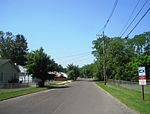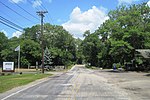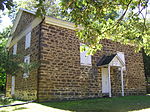Pemberton, New Jersey

Pemberton is a borough in Burlington County, in the U.S. state of New Jersey. As of the 2020 United States census, the borough's population was 1,371, a decrease of 38 (−2.7%) from the 2010 census count of 1,409, which in turn reflected an increase of 199 (+16.4%) from the 1,210 counted in the 2000 census. The township, and all of Burlington County, is a part of the Philadelphia–Reading–Camden combined statistical area and the Delaware Valley.Pemberton was incorporated as a borough by an act of the New Jersey Legislature on December 15, 1826, within portions of New Hanover Township and Northampton Township (now known as Mount Holly Township). Pemberton became an independent borough c. 1894. The borough is named for James Pemberton, a property owner in the area.It is a dry community, where alcohol is not permitted to be sold legally, as affirmed by the most recent referendum which was held in 1980.
Excerpt from the Wikipedia article Pemberton, New Jersey (License: CC BY-SA 3.0, Authors, Images).Pemberton, New Jersey
Antis Street,
Geographical coordinates (GPS) Address Nearby Places Show on map
Geographical coordinates (GPS)
| Latitude | Longitude |
|---|---|
| N 39.97219 ° | E -74.686558 ° |
Address
Antis Street
08068
New Jersey, United States
Open on Google Maps








